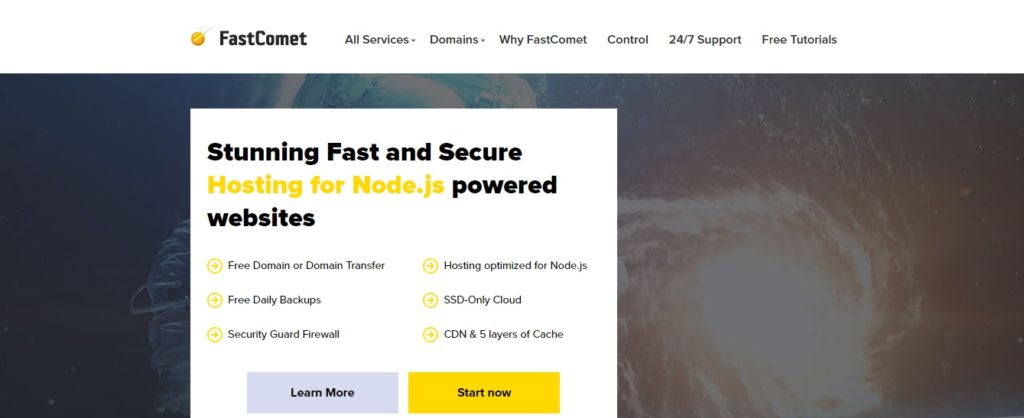
Trying to manually schedule social media posts can be extremely stressful. Overwork can lead to a decrease in your ability to post and a loss of followers. You can reduce the time spent on social media by scheduling posts in advance. You can also use a calendar on social media to plan posts that will be most effective. Here are some tips on scheduling posts.
It is better to plan content ahead of time. This will help you avoid procrastination that can lead to poor content quality. If you plan your posts at least a week in advance, it gives you the opportunity to search for the right pieces before the deadline. Post Planner is a great scheduling tool that makes it easy to find content. To preview your content, you can use icons to help you if you're not confident in writing or visualizing.

It is vital to plan content for any social media strategy. A calendar can be used as a collaborative tool. Social media managers can use it to plan content and share it with clients. It is also useful for videographers and designers who need to keep track on upcoming events. Developers can notify clients when new features will be launched. Clients can also approve posts before they are published. It can be used by HR staff to remind clients about company milestones.
Another important step in social media scheduling is to research your competitors. Listening to the posts of your competitors can offer valuable insights. Take into account demographic regions, times of day, hashtags, and topics. You should consider what type of content your posting so you can choose the right times. You might find that you're posting about fun stuff on Friday afternoons, while posts promoting education are better performed during midweek. You need to get to know your audience so you can plan your content accordingly.
Agorapulse is a popular social media management tool. It includes a content calendar and publishing features. There is also a social media inbox and analytics tools. RSS feeds are also available to share content on Instagram. The software works with most social networks like Facebook, Twitter, Google My Business and Google My Business. Social media management becomes easy when you use a social calendar. Buffer Publish, a budget-friendly option to schedule social media posts is a good choice.
MeetEdgar is another social media scheduling tool. This scheduling tool is most well-known for its content curation and automated queuing features. To avoid duplication, users can also add their content and mark posts to be "evergreen". MeetEdgar also automatically generates different versions of content for each network. This is helpful for content reuse, as certain networks have restrictions on what they allow. This scheduling tool supports Facebook, Twitter, YouTube, Pinterest, and Instagram, so you won't have any trouble keeping up with content on all of these platforms.

You should also experiment with your posting frequency. Facebook's algorithms, for example, use algorithms to determine the frequency at which you can post. If you want to increase your organic post reach, you should experiment with different times and frequencies. Organic posts reach approximately 5% of followers, or about 1 in 19 people. However, you can increase your reach by as much 10% by testing different posting time and finding the right balance in consistency and success.
FAQ
What is the highest-paid affiliate program?
Are you keen to make money online
If so, then you're in good company! There are many ways you can make money online. Some work better than others. No matter which method is used, there are always ways to improve.
Affiliate marketing is one my favorite ways to make a living online. Affiliate marketing allows affiliates to earn commissions based on the sales they generate through their websites.
Affiliates typically sign up for affiliate accounts from companies that offer them. Once they have enough sales, they can continue to earn commissions.
Let me give you some examples.
If you wanted to start a blog about cooking, you could be an Amazon.com affiliate. They get a small percentage of any total purchase made by visitors to Amazon.com.
You could also become an associate at Sephora.com if you want to sell makeup. If you sell makeup on your site, you would receive a cut from each sale.
There are many affiliate programmes available. The trick is to choose those that pay well.
These two websites are worth checking out. They list thousands affiliate programs and rank them based on their payout rates.
These sites are awesome resources for learning more about affiliate marketing. By signing up to free affiliate programs, you won't lose anything. Just try it to see if the results are satisfactory.
What is the difference between web hosting vs cloud hosting?
Web hosting is the act of storing data on servers located in a particular place. Cloud hosting is the storage of data on remote servers that can be accessed via the internet.
How much do Amazon affiliates get paid?
Amazon affiliate program pays its affiliates a commission based on sales generated from the links they place on their websites. A typical sale price of $10-$30 will earn you between 10-20% and 30-40% commission.
The product sold and the amount of commission paid will determine how much commission you receive. For example, if someone buys a $50 item, you would receive 50 cents.
The average affiliate makes $100-$200 a month.
How to make money online, without investing?
Although I have answered this question before, it is still pertinent today.
It's possible to make money online without investing any money at all.
However, dedication and hard work are required.
Here are some tips:
-
Sell Your Product – This is probably the easiest way to make money online, without spending any money.
-
Freelance Writing - Many people are willing to pay for quality content. Why not create articles for other businesses, and make more money?
-
Create Websites: It's easy to create websites without any technical knowledge.
-
Start a Blog - Another way to make money online is to start a blog. It is relatively easy to set up and manage.
-
Become An Influencer - There are tons of opportunities on social media. Instagram, Facebook or Twitter can be used to build a community and monetize that audience.
-
Offer Consulting Services: If you know what your goals are, you may be able to offer consulting services to clients in order to help them reach them.
-
Teach English Abroad- This is a popular option if you want to travel while also earning money.
-
Write Articles - Some bloggers make money through writing articles.
-
Sell Products on eBay: Another great way online to make some extra cash is to sell products via eBay.
-
Get Paid To Take Surveys - You can earn money taking surveys. The best part is that you can qualify for these offers without purchasing anything.
-
Earn Money Working From Home – There are many companies who hire individuals for simple tasks such customer service and data entry.
-
Virtual Assistant Work – Are you good at research and typing? Consider working as a virtual assistant.
There are many different ways you can make money online. But, most of them require time and effort.
You should look at other options if you don't have time or the energy to invest.
I hope you found this article helpful in understanding how to make money online.
Please share this with anyone who might find it useful.
Is affiliate marketing a full time job?
Affiliate marketing is an extremely popular model for online business. Affiliate marketing allows you to make money from your home and earn commissions without investing. There are many different ways to become an affiliate marketer. You have three options: you can create your own website, join a program or promote another product. It is best to start by finding a product you love and to see if it has an affiliate program. If there isn't, you can always set up your program.
Choose a niche. This is the first step. You should choose something that you are passionate about and love talking about. After you have chosen a niche, it is time to do some research. Find out the price of products. Look at their sales funnels to see the steps that you will need to follow to sell them. Then, pick a few products you'd like to promote. Once you've finished this, you need to make a website around your chosen products.
The software you use will track the time and duration of visits to your website. From here, you can work out how much to charge per visitor. Most programs offer one of two options: a fixed-price (where you are only paid once regardless of how often people visit), or a percentage share (where you receive a commission every time someone purchases something).
Once you have built up your audience, you can promote yourself. The best way to do this is via social media sites, such as Facebook Twitter LinkedIn YouTube YouTube Pinterest. Ensure you're sharing useful content to help people with their jobs. When promoting a course for example, you should talk about why it's great as well as its benefits.
Affiliate marketing is a great way to make a side income. You don't need to invest thousands into creating a new blog or learning how to code.
Statistics
- According to research by Marketo, multimedia texts have a 15% higher click-through rate (CTR) and increase campaign opt-ins by 20%. (shopify.com)
- Instagram is the most popular channel, with 67% of brands using it. (shopify.com)
- According to the Baymard Institute, 69.82% of shopping carts are abandoned. (shopify.com)
- Some 70% of consumers say SMS is a good way for businesses to get their attention. (shopify.com)
- One of the most well known sites is the Amazon affiliate program, Amazon Associates , which boasts the largest market share of affiliate networks (46.15%). (bigcommerce.com)
External Links
How To
Affiliate marketing: The pros and cons
Affiliate marketing refers to performance-based advertising where affiliates get compensation from advertisers when they bring traffic to their sites. Pay-per-click (PPC) is the most popular form of affiliate marketing. Other forms of affiliate marketing include cost per action, cost per lead (CPL), or cost per sale (CPS).
Affiliates do not require any sales or marketing knowledge. They only need a website and some promotional material. However, there are many disadvantages of affiliate marketing as well. Affiliate marketing is not for everyone. To make money you will need many visitors to the site. Your site will also require you to dedicate time creating content and promoting it. The downside to affiliate programs is their complexity in setting up and maintaining. It is common for new affiliates to start small, before they grow into full-time businesses.
Pros:
-
It's simple to get started without any upfront investment.
-
No commitment of any kind.
-
Low risk
-
Scale easily
-
Can be used for beginners.
-
You don't have to understand the business model.
-
You can use it to build a passive income stream.
-
There's no need to fret about customer support.
-
It allows for you to design a flexible timetable.
-
You can work anywhere.
Cons:
-
It takes time for growth.
-
It may be difficult for you to compete with larger companies.
-
It requires patience.
-
It is not for everyone.
-
You can't control the quality products you promote.
-
It is hard to measure results.
-
It can become very costly to operate if you don’t know what your doing.
Affiliate marketing is a great method to make online money. Affiliate marketing is an easy way to make money online. However, it can be difficult to do well. Check out these posts to learn more about affiliate Marketing.